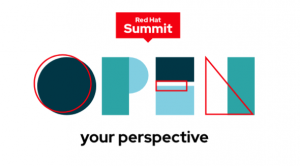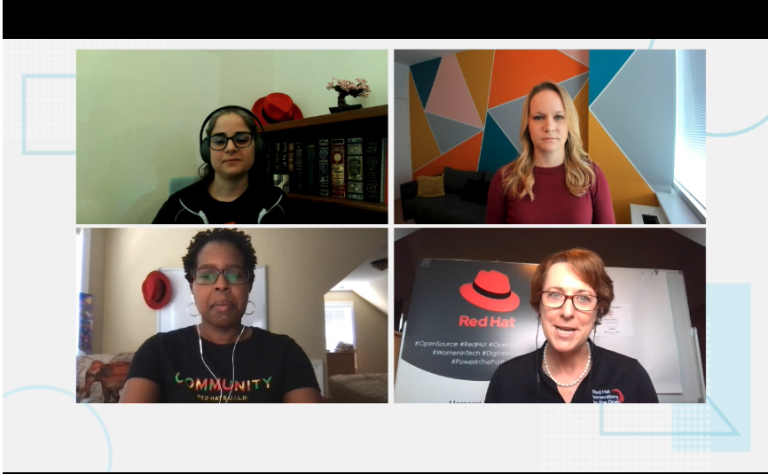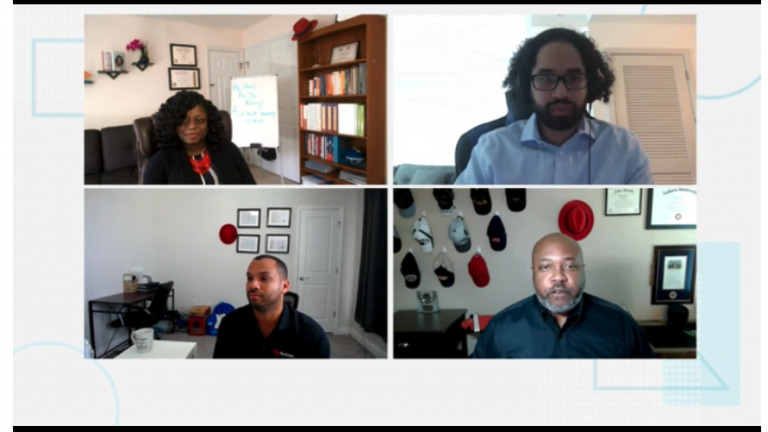Red Hat Summit 2021
The second edition of the virtual Red Hat Summit during the last two days was all focused on open source. And, of course, on Red Hat as a developer, contributor and provider of open source for decades. At the beginning Paul Cormier, President and CEO of Red Hat, took the 35.000 attendees on a trip through open source history, on which RedHat wrote a chapter with their Enterprise Linux (newest release: RHEL 8.4) and their Kubernetes platform OpenShift. Now, open source has grown up, become mature and enterprise ready. And Linux has become the foundation of the most open source apps and tools, e.g. it is the base for all container technology.

But the needs and wishes of customers and cloud users are changing as well, some years ago it became clear that the future will be hybrid cloud. Red Hat adapted this approach and introduced the Open Hybrid Cloud.[1] Open means that this cloud is based on open source, and hybrid means that every aspect of cloud computing is used: public clouds, on-premise data center, edge cloud, private cloud. Paul Cormier states: “Only in an open hybrid cloud environment user and customers have a true freedom of choice where to run their workloads.” Matt Hicks, Executive Vice President, Products and Technologies at Red Hat, took e deeper look into it: “Open hybrid cloud was built on the philosophy that customers want to take advantage of every aspect of cloud computing, from location, to innovation, to economics. And they want a framework to make that manageable and secure for the lifecycle of their applications. Open hybrid cloud is that framework.“[2]
To gain a true hybrid cloud OpenShip was evolved to run on every Hyperscaler, but was also developed inside:
The first service, Red Hat OpenShift Streams for Apache Kafka, is focused on distributing data and events to better connect applications running on OpenShift. It can connect applications across clouds and across datacenters quickly and securely to accelerate developers without having to specialize in running Apache Kafka at scale. (Learn more about Red Hat OpenShift Streams for Apache Kafka.)
And, the nature of how Red Hat is building the next generation applications is more distributed. Today’s applications talk to more services than ever via APIs. Those APIs provide access to the data that drives applications. Controlling access, understanding consumption and guiding usage are all critical to make these services operate as a solution. To manage all those APIs was Red Hat OpenShift API Management introduced. (Learn more about Red Hat OpenShift API Management.)
But hybrid deployments are not possible without highly automated operations that can integrate today’s and tomorrow’s applications, and also scale and adapt to entirely new locations. This is where Red Hat has been making investments to bring together the power of automation with advanced analytics, specifically integrating Ansible Automation Platform, Red Hat Advanced Cluster Management and Red Hat Insights. This integration provides several key benefits.
First, it manages the hybrid cloud consistently from one cloud to the next, whether it’s on-premises, in the public cloud or it’s a Red Hat managed cloud service. Customers don’t lose management capabilities by changing their preferred consumption model.
Second, it extends the power of Red Hat Ansible Automation Platform with its automation capabilities into completely new workflows, especially for applications that are made up of both containerized applications and non-containerized applications and services.
Third, it brings advanced analytics and recommendations to Operations and Security teams, through the extension of our Insights program to an increasing portion of the portfolio. We have worked to instrument both RHEL and OpenShift to better understand running workloads in these new use cases and help guide our customers with our learnings.
Finally, it brings together the scalability of Red Hat Advanced Cluster Management to manage fleets at the edge, with the automated provisioning and security of Ansible.
And of course, hybrid cloud includes edge computing, Red Hat evolved also in this direction via Red Hat edge[3] and is entering space and oceans with it.[4]
The true open source
Going back from open source is coming back to open source. One part of the Summit was focused on diversity and inclusion, for me a major topic in open source! I mean the sessions about Blacks in tech and Women´s leadership. The last year showed in many ways that open source is divers and lives by diversity.[5]
From my European point of view, I was skeptical what sessions that may be, but joining the sessions I understood immediately. Red Hat is mostly represented in the US, and the situation there is so different from my own surrounding and understanding. So, the sessions make it obvious to me, the description of the sessions were right, here the text of Blacks in tech, but that also counts for women in tech:

“Representation of Blacks in the technology sector remains marginal, despite the growing number of black graduates in STEM fields and commitment by tech companies to address disparity gaps. There’s still a lot of work to be done to achieve significant progress. Black men and women in technology play a role in highlighting possibilities and inspiring the future generation to recognize their potential in the technology field. In this session, we’ll spotlight three Black professionals who’ve successfully entered the technology industry, and their varying paths to entry. Our panelists will share challenges and barriers limiting progress of addressing the underrepresentation of Blacks in technology. They’ll also share their individual contributions and efforts toward tearing down barriers and overcoming these obstacles.”[6]
So, thanks to Red Hat for being truly open and show how gaining diversity is evolving quality, products, business!
Friederike Zelke
[1] https://www.redhat.com/en/blog/why-what-and-how-open-hybrid-cloud
[2] https://www.redhat.com/en/blog/using-open-hybrid-cloud-take-full-advantage-cloud-computing https://www.redhat.com/en/blog/evolution-computing-and-open-hybrid-cloud
[3] https://www.redhat.com/en/products/edge
[4] https://www.ibm.com/cloud/blog/ibm-develops-a-unique-custom-edge-computing-solution-in-space
[5] https://the-report.cloud/we-love-open-infrastructure
[6] Session description at the session page.

